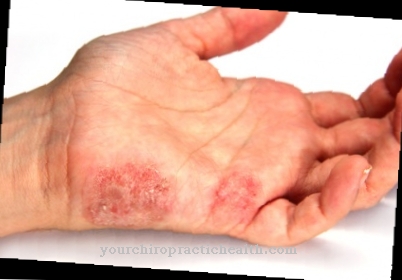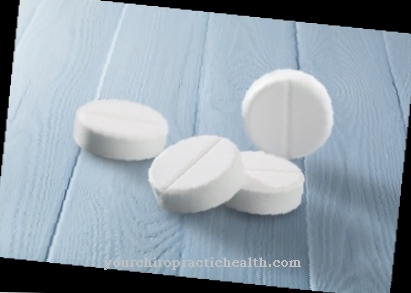At Quinidine is an active ingredient that belongs to the group of antiarrhythmics. It is used to treat certain irregular heartbeats.
Medical application & use

Quinidine As an active ingredient in the group of antiarrhythmics, it helps to treat various problems in the heart (e.g. too fast and irregular heartbeat, atrial flutter and atrial fibrillation).
It is given during heart treatment whenever there is a need to lower a fast heartbeat or to normalize an irregular heartbeat. The treatment of cardiac arrhythmias and the regulation of the heart rhythm is also carried out with drugs that contain the active ingredient quinidine.
Quinidine can also be used for cardioversion when electroshock therapy is not possible.
Pharmacological effect
Quinidine is an active ingredient of class 1 a of antiarrhythmics. It blocks the sodium channels in the heart muscle cells, so that the excitability of the heart muscle decreases due to the reduced sodium influx.
In addition, the potassium outflow is inhibited by the active ingredient quinidine, so that the action potential is extended. Quinidine also has a vasodilating effect, which lowers arterial blood pressure and thereby relieves the heart and its muscles. The resulting muscle relaxation is particularly evident in the arms and legs of affected patients. Due to the lower excitability of the heart, the heart also slows down and therefore beats more regularly.
The active ingredient quinidine is absorbed very quickly by the human body. It can already be detected in the patient's blood after about 15 minutes and the symptoms decrease noticeably at this point. In combination with a calcium channel blocker, quinidine also improves the regulation of circulatory disorders when the heart is stressed.
You can find your medication here
➔ Medicines for cardiac arrhythmiasRisks & side effects
In very many patients it could be observed that Quinidine has a negative effect on the gastrointestinal tract. This usually results in nausea, vomiting and diarrhea. If there is an overdose of the active ingredient, so-called quinidine poisoning can occur, which affects the central nervous system and can lead to visual disturbances, nystagmas or damage to the optic nerve. Typical of these are hearing disorders (e.g. tinnitus) as well as headaches, dizziness or confusion. In rare cases, the function of the liver can be disturbed by the active ingredient quinidine.
If the patient has a weak heart muscle (heart failure NYHA III and IV) or a slow heartbeat, quinidine must not be taken. It is also not indicated if cardiac glycosides have already been overdosed or if there are cardiac conduction disorders. If the patient suffers from too high atrial heart beat rate, then, after careful consideration by the attending physician, another antiarrhythmic should be used first.
There is insufficient experience with the use of quinidine during pregnancy. However, there is a possibility that the unborn child may be lost, which is why it should only be taken after the doctor in charge has weighed the benefits and risks. Since the active ingredient is excreted in breast milk, quinidine should not be taken during breastfeeding. Although there are no known harmful effects for infants, it should also be considered whether the benefit for the mother is greater than the risk for the infant. Its use in children has not yet been tested, so that in this case only the attending physician can decide whether it is necessary to take quinidine.
If quinidine is taken together with other drugs, some interactions may occur, depending on the form of the drug (e.g.Tablet, syringe) can represent differently. If, for example, antihypertensive agents are taken in higher doses, there is a risk of negative effects on the heart.
This can also increase the effect of quinidine. If treatment with antibiotics or anti-fungal agents must also be carried out at the same time, the effectiveness of quinidine can in turn be reduced. If cardiac glycosides (e.g. digoxin or digitoxin) are taken at the same time, these active ingredients may be strengthened by quinidine. Due to the numerous interactions with other drugs, quinidine should therefore only be taken in consultation with the attending physician.
Since the side effects of quinidine can sometimes be very strong, it is now rarely prescribed by doctors. In Germany, the active ingredient is generally only available on prescription.
















.jpg)







.jpg)


